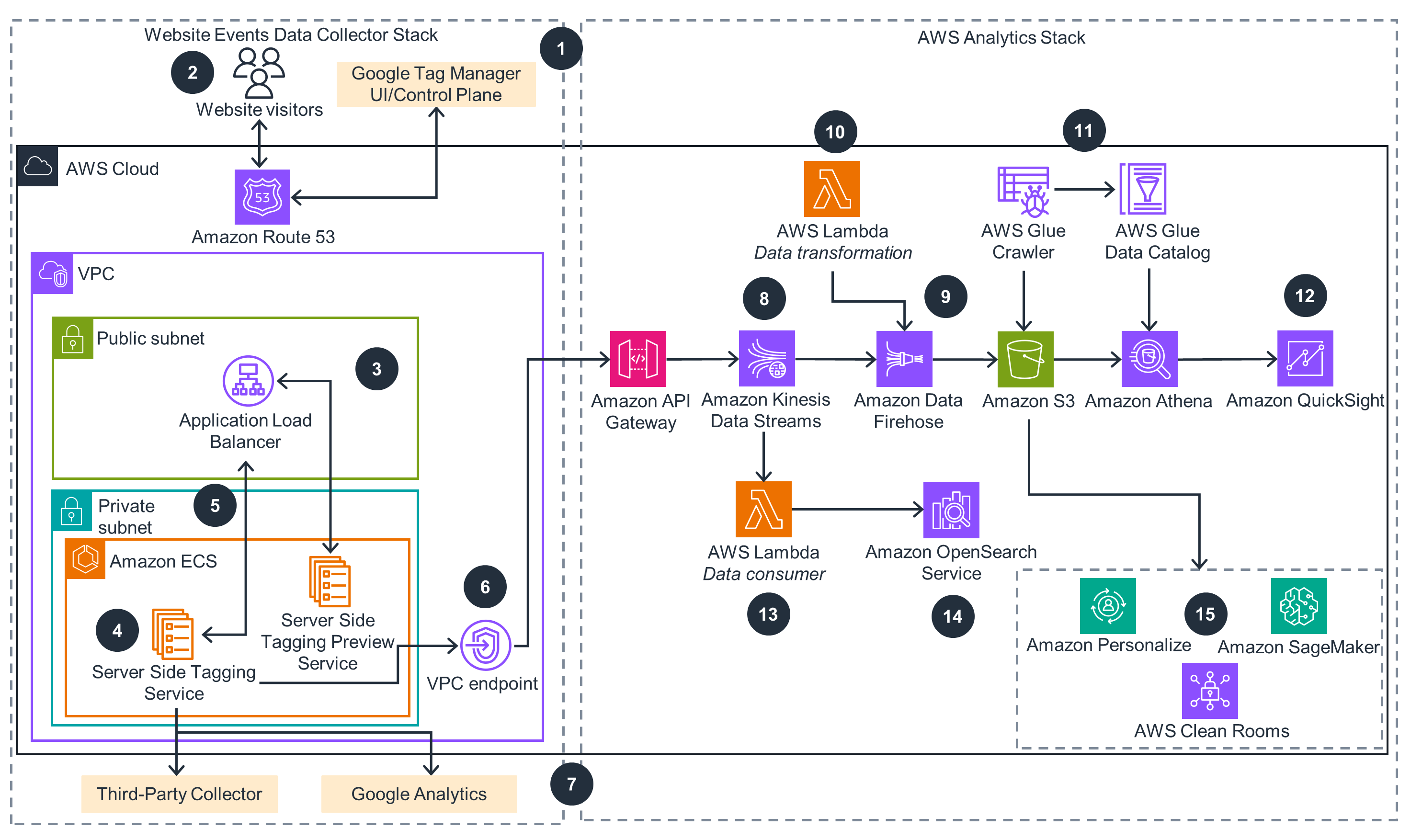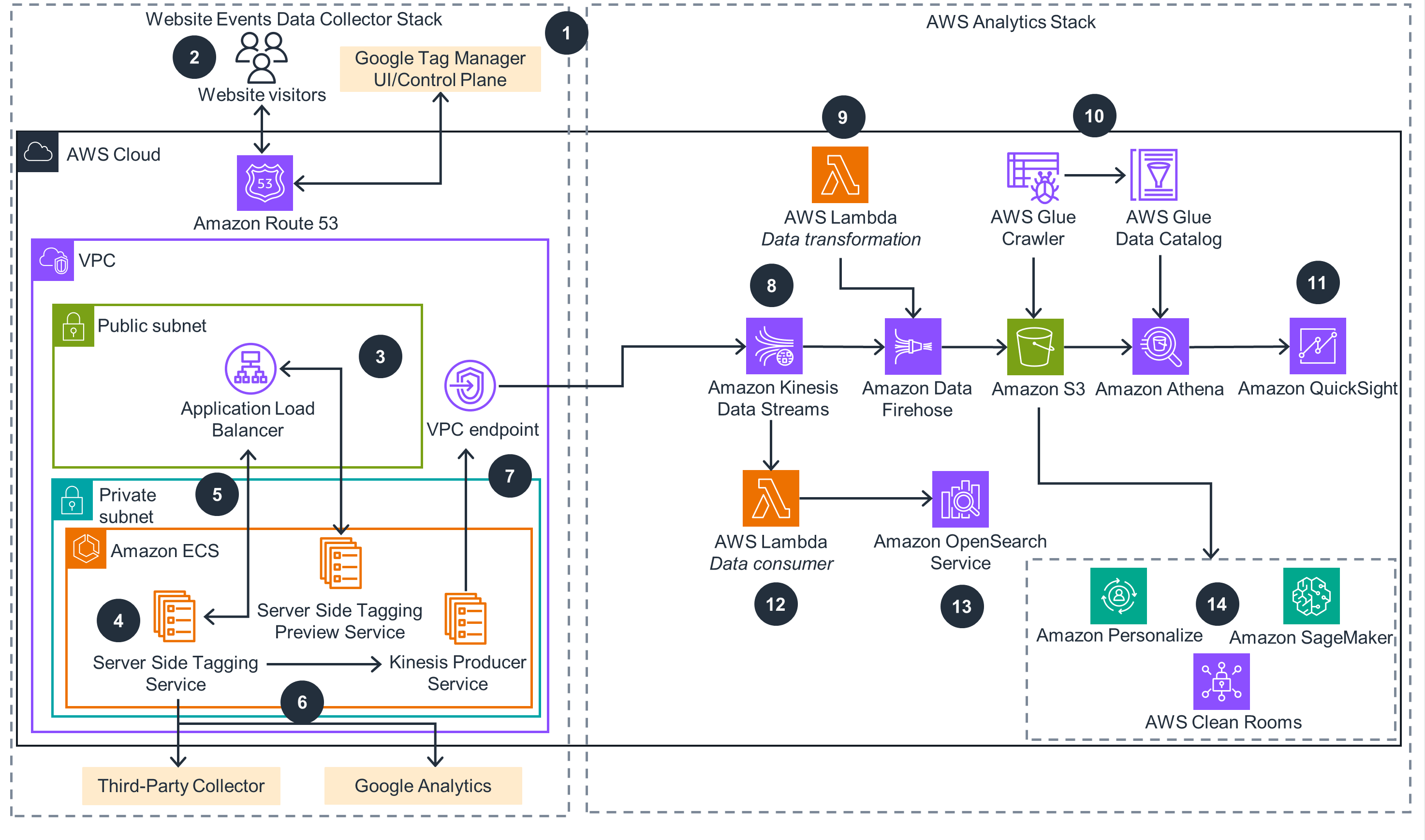Overview
How it works
How it works
This architecture diagram demonstrates how to use Amazon API Gateway to build a near-real time website activity data collection and analytics stack on AWS with Google’s Server Side Tagging Service.

How it works
This architecture diagram demonstrates how to use Amazon Kinesis Producer Service to build a near-real time website activity data collection and analytics stack on AWS with Google’s Server Side Tagging Service.

Deploy with confidence
Everything you need to launch this Guidance in your account is right here.
We'll walk you through it
Let's make it happen
Well-Architected Pillars
The architecture diagram above is an example of a Solution created with Well-Architected best practices in mind. To be fully Well-Architected, you should follow as many Well-Architected best practices as possible.
Related Content
Disclaimer
The sample code; software libraries; command line tools; proofs of concept; templates; or other related technology (including any of the foregoing that are provided by our personnel) is provided to you as AWS Content under the AWS Customer Agreement, or the relevant written agreement between you and AWS (whichever applies). You should not use this AWS Content in your production accounts, or on production or other critical data. You are responsible for testing, securing, and optimizing the AWS Content, such as sample code, as appropriate for production grade use based on your specific quality control practices and standards. Deploying AWS Content may incur AWS charges for creating or using AWS chargeable resources, such as running Amazon EC2 instances or using Amazon S3 storage.
References to third-party services or organizations in this Guidance do not imply an endorsement, sponsorship, or affiliation between Amazon or AWS and the third party. Guidance from AWS is a technical starting point, and you can customize your integration with third-party services when you deploy the architecture.
Did you find what you were looking for today?
Let us know so we can improve the quality of the content on our pages